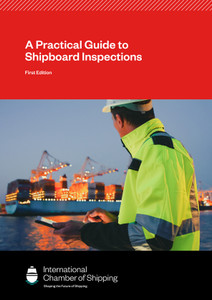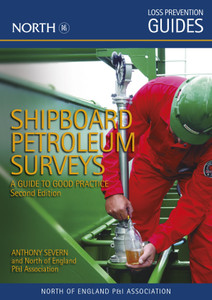
This Guide deals with the practical aspects of salvaging a ship and the implications for a ship that requires a Place of Refuge.
This Guide does not seek to explain all the aspects of salvage, that is a matter for salvage experts and would be determined on-site based on the situation as presented. However, it does introduce the main salvage techniques employed and, importantly, gives you an understanding as to who the various roles and positions in any salvage operation, which can be quite daunting. While simple operations may only have 12 persons, it can still be confusing as to who is in charge when you are presented with a Salvage Manager, Senior Salvage Master, Salvage Master, Salvage supervisor etc.
A requirement for a ship to seek a place of refuge was given much attention in the media in the cases of the ERIKA, CASTOR and PRESTIGE. The thought of being turned away from a country when your vessel needs assistance to prevent a much larger maritime incident or casualty is perhaps one of the top nightmare scenarios for any Shipmaster. Ideally no ship should be refused a Place of Refuge when requested and, in the EU, it has been agreed that there is a 'no rejection without inspection'.
This Guide contains comprehensive guidance on the two related aspects of salvage and Place of Refuge for the shipmaster, bridge team and the ship owning/operating company.
If a ship is involved in a serious incident such as explosion, fire, collision, grounding, structural failure, or ingress of water it will require external support, to save the crew, ship or cargo and protect the environment from the threat of pollution. This assistance will usually involve the appointment of professional salvors by the Master or owners.
A roadmap recommending actions that can be taken by the master and crew are given in the joint publication by International Chamber of Shipping (ICS) and the Oil Companies International Marine Forum (OCIMF) ‘Peril at Sea and Salvage: A Guide to Masters’. This Guide has been prepared principally with oil tankers and gas carriers in mind, but applies to most vessels. The ships should take prompt action, using their expertise and emergency equipment held onboard.
The Master must advise all the stakeholders in the ship and voyage, including contacting the owners or managers and advise them of the situation. They in turn should inform the Hull and Machinery Underwriters and the Protection & Indemnity Club (P&I Club), charterers, cargo interests, etc. The Master must inform the coastal State, reporting details of the ship, the type of emergency, the situation onboard, if there is any pollution and what the risks to other vessels and to the environment.
After the extent of emergency has been determined, it may be possible to proceed to a place of refuge. Alternatively, the Master and shipowner can request salvage assistance by contracting a salvage company to carry out a salvage operation, with either a salvage team or by providing a salvage tug with the required bollard pull to tow the vessel to safety.
The type of salvage contract depends on the urgency of situation and usually takes the form of an open contract such as Lloyds Open Form Salvage Agreement (LOF) where the amount of the salvage payment or award is decided after operations. Where there is less urgency, a contract can be negotiated or a standard contact can be used such as available from the Baltic and International Maritime Council (BIMCO) including those for Salvage, Towage and Wreck Removal.
This book, ‘Practical Salvage Considerations and Port of Refuge’, gives an insight into the work of the salvors and an understanding of the salvage process. It is meant to be instructional, informative and interesting.
After an initial survey, the Salvage Master will produce a salvage plan deciding how many skilled salvage crew are needed and what specialist equipment is required. The first action is to stabilise the vessel to ensure that conditions do not deteriorate. A Place of Refuge may be necessary to permit the salvage operation to be completed safely with a minimum of risk to the environment. This place of refuge could be in a port to allow discharge of cargo and carry out repairs or in a sheltered bay to allow a ship to ship transfer (STS) of cargo.
A formal request will be made to the coastal State for permission to enter their jurisdiction to a Place of Refuge for salvage repairs. For this permission to be granted, the danger to the coastal State must be assessed. If the authorities feel that the danger is too great then permission will be denied. This danger could include environmental pollution, threat of explosion, etc.
If the salvage procedure is unsuccessful the situation can change in to a wreck removal operation. A Wreck Removal Order can be issued by the local authorities and the wreck removed by salvors under a contract from insurers. The order can be issued because of a threat to the environment, a navigational hazard such as a submerged wreck blocking a channel, if local amenities are affected or the wreck is causing economic disruption.
After the successful completion of the salvage operation the salvors can claim a salvage award based on the salved value of the vessel and cargo, the salvage expenses, the danger and the levels of risks. Alternative, for LOF contracts, the Special Compensation P&I Club (SCOPIC) clause can also be used.
John Nixon
Foreword
Part
A
Understanding
Salvage
1
Introduction
1.1
The
Response
of
the
Master
1.2
Initial
Actions
1.3
Parties
to
Salvage
1.4
The
Role
of
the
Salvor
1.5
The
Role
of
the
Rescue
Coordination
Centre
(RCC)
1.6
The
Difference
between
Distress
and
Salvage
2
Understanding
the
Situation
2.1
Stages
of
Salvage
2.2
Types
of
Salvage
2.3
Media
Management
and
Communications
3
Initiating
the
Request
for
Salvage
3.1
Ship’s
Master
–
Notify
Company
3.2
Ship
Owner
–
Engage
Salvor
3.3
Salvor
–
information
Gathering
from
the
Ship
Owner
4
Initial
Engagement
with
the
Salvor
4.1
Commercial
Approaches
4.2
Appointing
the
Salvor/Salvage
Tender
4.3
Agreement
of
Salvage
Services
4.4
Salvage
Mobilisation
4.5
Salvage
Operational
Challenges
4.6
Salvage
Companies
and
Other
Organisations
Part
B
Practical
Salvage
Considerations
5
Ship
Information
and
Status
5.1
General
Information
to
be
Provided
by
the
Ship
5.2
Stability
Considerations
5.3
Additional
Documents
5.4
Actions
that
Can
be
Taken
by
the
Ship
6
Towage
Considerations
6.1
Estimating
the
Bollard
Pull
Required
6.2
Bollard
Pull
Capability
of
Tugs
6.3
Emergency
Towing
6.3.1
Tanker
emergency
towing
arrangements
–
aft
6.3.2
Tanker
emergency
towing
arrangements
–
forward
7
Salvage
Activities
and
the
Salvage
Plan
7.1
The
Salvage
Survey
7.2
The
Preliminary
Salvage
Response
7.3
The
Salvage
Plan
7.4
Salvage
Operations
7.4.1
Patching
7.4.2
Pressurising
tanks
7.4.3
Portable
pumps
7.4.4
Bunker
removal
7.4.5
Cargo
removal
7.4.6
Fire-fighting
7.4.7
Pollution
control
7.4.8
Heavy
lifting
7.4.9
Diving
7.5
Specialist
Contractors
7.6
The
Termination/Completion
of
the
Salvage
Contract
8
Environmental
Protection
8.1
Environmental
Response
from
Coastal
States
8.1.1
Europe
8.1.2
USA
8.1.3
Australia
8.1.4
United
Kingdom
8.1.5
NCP
operational
section
8.2
Environmental
Case
Studies
8.3
Environmental
Conventions
and
Regulations
8.3.1
International
agreements
8.3.2
UN
Convention
on
the
Law
of
the
Sea
(UNCLOS)
8.3.3
Payment
for
clean-up
costs
8.4
Removal
of
Pollutants
(oils
and
chemicals)
9
Types
of
Major
Casualties
9.1
Cargo-related
Incidents
9.2
Incident
Type
–
Explosion
9.3
Incident
Type
–
Fire
9.4
Incident
Type
–
Grounding
9.5
Incident
Type
–
Structural
Failure
9.6
Incident
Type
–
Ship
Stability
9.7
Incident
Type
–
Collision
10
Emergency
Preparedness
10.1
The
ISM
Code
10.2
Responsibility
of
the
DPA
in
Salvage
10.3
Role
of
the
Drill
on
Board
10.4
Table
Top
Exercises
–
Maritime
Operational
Readiness
10.5
Challenges
from
Potential
New
Incidents
Part
C
Place
of
Refuge
11
Overview
of
Places
of
Refuge
11.1
Why
a
Ship
May
Require
a
Place
of
Refuge?
11.2
How
is
a
Place
of
Refuge
Determined?
11.3
Initiating
the
Request
for
a
Place
of
Refuge
11.3.1
Within
the
European
Union
11.4
When
a
Request
for
a
Place
of
Refuge
is
Refused
11.5
Place
of
Refuge
Case
Studies
11.6
Guidelines
for
Places
of
Refuge
11.6.1
IMO
guidelines
11.6.2
Regional
guidelines
11.7
Successful
Places
of
Refuge
Part
D
Legal
Aspects
of
Salvage
12
Salvage
Contracts
12.1
Definition
of
a
Contract
12.2
Lloyds
Open
Form
(LOF)
12.2.1
Lloyds
Open
Form
1980
12.2.2
Salvage
Convention
1989
12.2.3
Lloyds
Open
Form
1990
12.2.4
Lloyds
Open
Form
1995
12.2.5
Lloyds
Open
Form
2000
12.2.6
Lloyds
Open
Form
2011
12.2.7
Lloyds
Open
Form
2020
12.3
Other
Open
Forms
12.4
Variations
on
the
Standard
Contract
12.4.1
BIMCO
12.5
Marine
Insurance
Underwriters
12.6
State
Funded
Salvage
13
Maritime
Law
of
Salvage
13.1
What
is
the
Legal
Definition
of
Salvage?
13.2
Who
can
Claim
Salvage?
13.3
The
Salvage
Convention
13.4
Wrongful
Dispossession
13.5
Negligence
During
the
Salvage
Services
13.6
Limitation
of
Liability
13.7
Apportionment
between
Various
Salvors
13.8
The
Salvage
Award
13.9
Legal
References
14
Wreck
Removal
14.1
The
Wreck
Removal
Convention
14.2
Who
Authorises
Wreck
Removal?
14.3
Type
of
Contracts
14.4
Wreck
Removal
Case
Studies
Appendices
Appendix
1
–
Abbreviations
and
Acronyms
Appendix
2
–
Organisations
and
Associations
Involved
in
Salvage
Operations
Appendix
3
–
IMO
–
Guidelines
on
Places
of
Refuge
for
Ships
in
Need
of
Assistance
Appendix
4
–
IMO
–
Applicable
International
Conventions
Appendix
5
–
IMO
–
Guidelines
for
the
Evaluation
of
Risks
Associated
with
the
Provision
of
Places
of
Refuge
Witherbys titles are developed using scripts developed by technical experts that are peer reviewed within work groups. Typically, they seek to improve understanding of the regulations, recommendations and guidelines issued by Industry.
Witherbys staff have significant expertise in the fields of navigation and hazardous cargoes as well as in the presentation of complex subjects in a graphic and easy to understand manner.
- Number of Pages:
- 200
- Published Date:
- June 2022
- Book Height:
- 210 mm
- Book Width:
- 297 mm
- Weight:
- 1.5 kg
- Author:
Witherbys
- Product Catalogue:
- Definitive Guides PDF
- Preview:
- Yes
- Publication Date:
- June 2022






